Widescreen Weekend 2013 |
Read more at in70mm.com The 70mm Newsletter |
| Written by: Mark Trompeteler. All photos by the author with many thanks to The National Media Museum Press Office. | Date: 32.03.2014 |
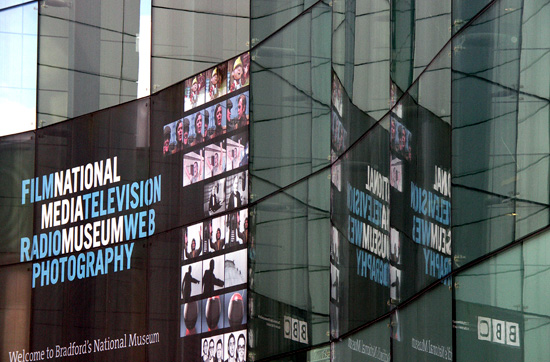 The National Media Museum’s annual festival of all things widescreen was
again held earlier this year in Bradford, in the UK.
Mark Trompeteler reports on a very successful and enjoyable event which
included acknowledgement of Cinemascope’s 60th Birthday. The National Media Museum’s annual festival of all things widescreen was
again held earlier this year in Bradford, in the UK.
Mark Trompeteler reports on a very successful and enjoyable event which
included acknowledgement of Cinemascope’s 60th Birthday.Once again film professionals, film enthusiasts, critics, educationalists, and writers from all over the world attended this year’s Widescreen Weekend in April, a strand of the Bradford International Film Festival. One question in my mind about this year’s Widescreen Weekend was: How on earth were the programmers and the museum going to be able to follow last year’s absolutely superb and very significant celebrations of “Cinerama at 60” ? Last year had one of the biggest attendances of the weekend ever, at some 180 core delegates, and a superb programme of Cinerama and other widescreen films that generated such a positive “buzz” over the whole weekend – last year’s 2012 event was going to be very hard act to follow ! It soon became apparent that I need not have feared that this year’s event might prove to be an anti-climax after 2012 – this year’s event I thought was excellent, and talking to other delegates during the weekend, they told me they were equally impressed. Congratulations are in order to the programmers and the museum for introducing a number of changes, to be discussed later, and making 2013 another great Widescreen Weekend. |
More in 70mm reading: Widescreen Weekend, Bradford, England "Meine Lieder-Meine Tršume" in Germany 2013 Widescreen Weekend Introductions Internet link: Trailer of “Remnants” Short film “Pantheon” Trailer for “The Last Days of Cinerama” |
Don’t Mention the War ! |
|
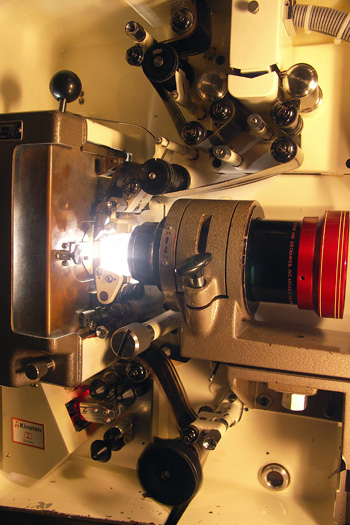 Despite including one of the most popular film musicals of all time,
Friday’s programme had a definite Second World War focus to it. The
weekend commenced with a screening of a 70mm print of the film “The
Longest Day”. Professor Sir Christopher Frayling, a regular weekend
attendee, and the well known, film historian, educationalist, author and
commentator on contemporary culture, using an excerpt from actual
documentary war footage, gave a studied and illuminating introduction to
the film. This screening on the flat screen did ample justice to the
epic proportions of the Normandy landings and the black and white
cinematography was magnificent, gaining the Oscar in that year in its
category. Despite including one of the most popular film musicals of all time,
Friday’s programme had a definite Second World War focus to it. The
weekend commenced with a screening of a 70mm print of the film “The
Longest Day”. Professor Sir Christopher Frayling, a regular weekend
attendee, and the well known, film historian, educationalist, author and
commentator on contemporary culture, using an excerpt from actual
documentary war footage, gave a studied and illuminating introduction to
the film. This screening on the flat screen did ample justice to the
epic proportions of the Normandy landings and the black and white
cinematography was magnificent, gaining the Oscar in that year in its
category. The next film of the day was a 4K digital presentation of the familiar favourite “The Great Escape”. This 4K presentation was considerably superior to the 2K version presented at the weekend a couple of years previously. The clean “crispness” and the detail in the projected image and its full colour reproduction demonstrated the advantages of seeing a classic film in a digitally restored version over that of seeing a faded and sometimes dirty or scratch impaired vintage film print. But just as in sweeping landscapes and shots of expansive sky in traditional film prints, we often were reminded of the granular structure of film, so in such shots still on a 4K file, we have similar visual artifacts or “noise” still noticeable. After the usual congenial wine reception in the Kodak Gallery the evening film was “The Sound of Music”. It was introduced by another regular delegate, the German film critic Wolfram Hannemann. He delivered another one of his detailed, fascinating and amusing introductions. One important fact he shared with us was that in Germany for a very considerable time after its initial release “The Sound of Music” was only ever seen in a much shorter version, with the whole last third of the film removed. For most of its life as a film in Germany the film had always concluded with the wedding of Maria to Von Trapp and the camera panning away from the church and away across the rooftops of Salzburg. The complete last third of the film, commencing with the next shot, which featured the arrival of the Nazis into the city, and then the whole Folk Singing festival section under the watchful eyes of Nazi officials and soldiers, and the family’s escape, was completely omitted from prints screened in Germany. It is only in relatively recent times that German audiences have seen the full version. The impressive 70mm print was projected on the curved screen, and the slightly dark nature of the print was evident in a few scenes. Whilst the audience refrained from singing along with the songs one unusual event did occur during the screening. The print “snapped” in the projector during the second half - at exactly the shot where the film used to finish in German screenings in former times! After a very short interval for repair, the screening concluded. |
|
New Widescreen Film Talent |
|
|
Amongst the big scale of widescreen films shown on the Saturday were two
opportunities for the audience to see emerging new talent embracing the
widescreen aesthetic in their filmmaking. The day started with Grant
Wakefield introducing his short audio visually impressive film
“Remnants”. Shot over a four year period in 4K using motion
controlled time lapse photography, the film portrays the beauty and
essence of megalithic structures in our landscapes. Shown in pristine 2K
the film also shows how young film makers can so successfully exploit
the power of the widescreen aesthetic in the medium of low cost
independent short films. A last minute alteration to and inclusion in
Saturday’s schedule also provided the opportunity for the screening of a
widescreen short film “Pantheon”, a recent graduation film from
the well respected BA (Hons) in Film Production Course at the University
for Creative Arts, from their Farnham campus film school, directed by
Frederick Lloyd. This beautifully realised and executed short film made
by students, was in one or two places reminiscent of a Ridley Scott
film, but made successfully on a miniscule student budget. |
|
Digital Cinerama |
|
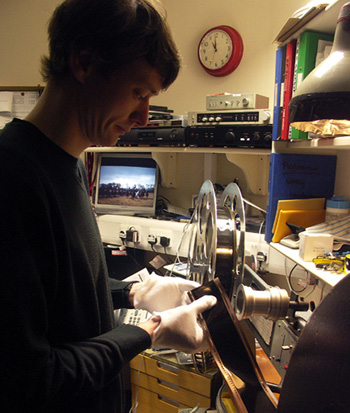 I wrote in last year’s report of the weekend that …“The contribution
that Dave and Randy continue to make to the preservation and championing
of Cinerama heritage is truly outstanding “. Returning in 2013 the ever
popular regular delegates, presenters and film heritage champions, Dave
Strohmaier and Randy Gitsch, brought with them a wealth of material on
Cinerama heritage. Readers of these regular annual reports may remember
that what Dave and Randy have been doing on amazingly low budgets is a
digital scanning of the best film material they can obtain of the back
catalogue of the old “three strip” Cinerama films. They then undertake a
digital “clean up” and colour restoration within the digital file and
then the production of a final file. It is a kind of re-mastering,
transmutation or transformation of film material to 2K digital files.
The purpose of this is to have material available for screening on
digital formats and to make available commercial Blu-ray DVDs so that
people can buy and add to their collections and make this Cinerama
heritage available to the home market. (see: www.flickeralley.biz ) This
is something that is being achieved at a fraction of the cost of a full
blown restoration back onto film material. I wrote in last year’s report of the weekend that …“The contribution
that Dave and Randy continue to make to the preservation and championing
of Cinerama heritage is truly outstanding “. Returning in 2013 the ever
popular regular delegates, presenters and film heritage champions, Dave
Strohmaier and Randy Gitsch, brought with them a wealth of material on
Cinerama heritage. Readers of these regular annual reports may remember
that what Dave and Randy have been doing on amazingly low budgets is a
digital scanning of the best film material they can obtain of the back
catalogue of the old “three strip” Cinerama films. They then undertake a
digital “clean up” and colour restoration within the digital file and
then the production of a final file. It is a kind of re-mastering,
transmutation or transformation of film material to 2K digital files.
The purpose of this is to have material available for screening on
digital formats and to make available commercial Blu-ray DVDs so that
people can buy and add to their collections and make this Cinerama
heritage available to the home market. (see: www.flickeralley.biz ) This
is something that is being achieved at a fraction of the cost of a full
blown restoration back onto film material.Dave and Randy gave a presentation of their current work of on the digital remastering of “Seven Wonders of the World” with a question and answer session on the process and the problems they have been encountering. This was followed by a screening of their digital remaster of “Cinerama Holiday”. The digital presentation of “Cinerama Holiday”, for the budget they had at their disposal, yielded remarkably crisp images on the big curved screen with good colour and remarkably good sound, which in their modern mix, employed the full potential of modern surround and rear speakers. Working with what were sometimes quite poor original “three strip” negatives, the equivalent of a total 9K scan was undertaken resulting in the 2K digital file that was screened. |
|
In The Picture |
|
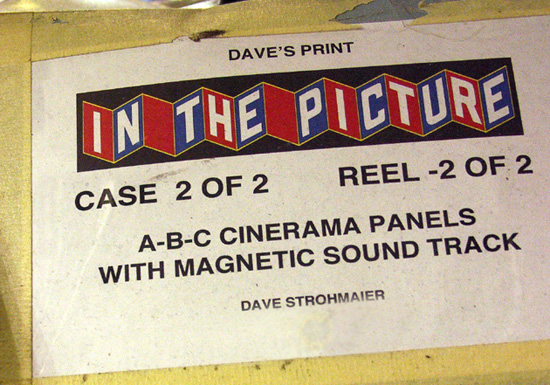 As reported on last year the intrepid Strohmaier and Gitsch and a
dedicated team of collaborators and sponsors like Fuji in LA and Tom
March, had started work on making a short promo travelogue using one of
the original “three strip” Cinerama cameras. The travelogue on Los
Angeles called “In The Picture” had its world premiere at the
Cinerama sixtieth birthday celebrations at Hollywood’s Cinerama Dome in
September 2012. Last year delegates in Bradford were treated to previews
of “three strip” “dailies” and footage of this small dedicated Cinerama
production crew on location. This year the audience was treated to the
European premiere of the film. In making this short film and making it
available for screening in the “three strip” format for the remaining
very few venues left in the world capable of exhibiting “three strip” –
Dave and Randy and their collaborators and sponsors have completed a
remarkable achievement. They have successfully made the first 3 panel
Cinerama film in over 50 years on original Cinerama equipment! It has
resonances of “Cinerama Holiday” and the oeuvre of the Cinerama
travelogues that preceded it, and a slight tone of pastiche – they have
demonstrated the power, scale and effectiveness of the Cinerama process
even in the impressive contemporary cinema exhibition environment of
today. It was wonderful to see the vivid vibrant colours and detail of
the giant all encompassing triptych pictures, now with the resolution
and detail of contemporary film stock. Sadly it is no doubt, also the
last Cinerama film ever to be made. It is a remarkable achievement. As reported on last year the intrepid Strohmaier and Gitsch and a
dedicated team of collaborators and sponsors like Fuji in LA and Tom
March, had started work on making a short promo travelogue using one of
the original “three strip” Cinerama cameras. The travelogue on Los
Angeles called “In The Picture” had its world premiere at the
Cinerama sixtieth birthday celebrations at Hollywood’s Cinerama Dome in
September 2012. Last year delegates in Bradford were treated to previews
of “three strip” “dailies” and footage of this small dedicated Cinerama
production crew on location. This year the audience was treated to the
European premiere of the film. In making this short film and making it
available for screening in the “three strip” format for the remaining
very few venues left in the world capable of exhibiting “three strip” –
Dave and Randy and their collaborators and sponsors have completed a
remarkable achievement. They have successfully made the first 3 panel
Cinerama film in over 50 years on original Cinerama equipment! It has
resonances of “Cinerama Holiday” and the oeuvre of the Cinerama
travelogues that preceded it, and a slight tone of pastiche – they have
demonstrated the power, scale and effectiveness of the Cinerama process
even in the impressive contemporary cinema exhibition environment of
today. It was wonderful to see the vivid vibrant colours and detail of
the giant all encompassing triptych pictures, now with the resolution
and detail of contemporary film stock. Sadly it is no doubt, also the
last Cinerama film ever to be made. It is a remarkable achievement.Following on from “In The Picture” a short documentary entitled “The Last Days of Cinerama” showed a brief behind the scenes look at the challenge of making the first Cinerama film in 50 years. |
|
Dolly'll never go away |
|
|
One of the great features of Widescreen Weekend is that very often you
can take a seat of an evening and watch a great screening of a Hollywood
classic big movie, from a recently made pristine70 mm print. When you
watch large format film quality, with great sound and with the inclusion
of overture, intermission music etc. - it recalls a great period of
cinema as it was once exhibited. Whatever you think of the 1969 film
“Hello, Dolly!” you can’t get away from the fact that it was one of
the last great big Hollywood musicals made on a scale that is just no
longer attempted. Admittedly not to everybody’s taste as regards a great
film I think there was a sense of real wonder in the audience as we were
reminded that in a great Hollywood musical anything can happen. In just
one of the sequences the population of a complete entire town, Yonkers,
can with a little of encouragement from a couple of lead players, almost
spontaneously “put on their Sunday clothes when they feel down and out”
burst into song in unison and embark on an amazingly huge co-ordinated
dance routine. Then maintaining the truly massive scale, and dressed in
richly coloured costumes, that entire population can board a train that
takes the population, still singing, to Sunday in New York. On arrival
there the scale of the city can be seen as far back as the eye can see
and the exhilarating singing and dancing, the glorious De Luxe colour,
camerawork and scale is breathtaking, all with not a single pixel of CGI
in sight ! The screening was fabulous and probably the closest to the
effect of hallucinatory drugs many of the audience has ever experienced.
Widescreen weekend and the museum deserve much wider recognition for
such fabulous screenings. For a few delegates the evening was amiably completed by an impromptu “who can do the best John Wayne impression?” competition at the Jury’s Inn bar. |
|
Cinemascope is 60 |
|
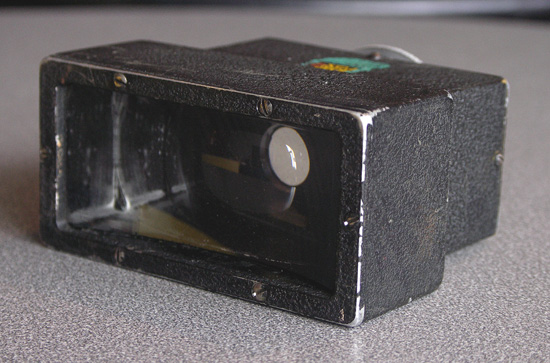 The traditional Sunday morning event of Cineramacana features a
miscellany of items, film clips, and short presentations of interest on
a variety of topics on widescreen cinema. Following on from last year’s
celebrations of Cinerama’s sixtieth birthday this year the Sunday
morning session included items to mark “Cinemascope at 60”. An academy
ratio B&W trailer for the colour ‘scope film “How To Marry A
Millionaire” was shown – a kind of cinematic contradiction in terms
- but it was from the very beginning of the widescreen revolution. A
number of early Cinemascope Fox shorts were shown – their original
intention probably to showcase the process to the public – they were
“Vesuvious Express” & “Hunters of the Sea”. Another short,
“The Miracle of Stereophonic Sound” was screened – more a
demonstration film probably made more for distributors and exhibitors
rather than the public. The traditional Sunday morning event of Cineramacana features a
miscellany of items, film clips, and short presentations of interest on
a variety of topics on widescreen cinema. Following on from last year’s
celebrations of Cinerama’s sixtieth birthday this year the Sunday
morning session included items to mark “Cinemascope at 60”. An academy
ratio B&W trailer for the colour ‘scope film “How To Marry A
Millionaire” was shown – a kind of cinematic contradiction in terms
- but it was from the very beginning of the widescreen revolution. A
number of early Cinemascope Fox shorts were shown – their original
intention probably to showcase the process to the public – they were
“Vesuvious Express” & “Hunters of the Sea”. Another short,
“The Miracle of Stereophonic Sound” was screened – more a
demonstration film probably made more for distributors and exhibitors
rather than the public.The morning also included a brilliantly put together compilation tribute to the director Tony Scott that was prepared by Tom Perkins of the projection team, an impressive “ear popping” Digital DTS showreel and also a 70mm reel from “You Only Live Twice”. Also public tribute was made of the work of Johan Wolthuis and Randy Gitsch in fostering the advancement of knowledge in widescreen cinema and heritage by their admission into The Widescreen Academy. The Cinemascope birthday was also acknowledged by a screening of “How to Marry A Millionaire”. The now contemporary digital film interface was further cemented in the audience’s minds when we realised that what we were seeing on the screen was a new 35mm Cinemascope print from a 4k master. I always mistakenly believed that the first feature film ever to complete production in Cinemascope was “The Robe”. However it seems I was under a misapprehension. “How to Marry A Millionaire” was being made at the same time as “The Robe” but was completed before the more complex and epic “The Robe”. It seems it was even actually released in Britain before “The Robe” - whilst in other territories it was held back and “The Robe” was released first – because it was thought it was a much better film to demonstrate the process. The weekend continued with “The Wonderful World of the Brothers Grimm” – written about in last year’s report – a very rare screening of one of the last surviving “three strip” prints of the film – a print donated to the museum’s archive by Australian private Cinerama collector John Mitchell. On the Sunday evening, journalist and author Brian Hannan gave a very revealing introduction to “The Guns of Navarone” - a 4K digital; presentation on the flat screen. For those that were in for the long haul, the concluding day featured “Gettysburg” in two parts with a total running time of 4hrs. 14min - shown in a “blow up” 70mm print on the flat screen. |
|
A Great Event |
|
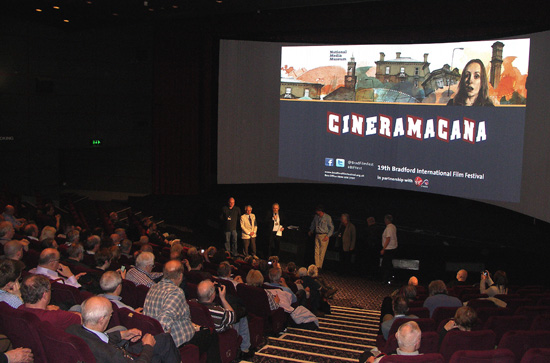 So how did the programmers Duncan McGregor and Bill Lawrence and the
museum make it such a great weekend and so very successfully follow last
year’s “Cinerama at 60” celebrations? I chatted to quite a number of
delegates and they all said how impressed they were with the event.
Issues that had featured in previous weekends had obviously been
re-considered. I and others seemed to think that there was a far more
relaxed and less frenetic atmosphere in this year’s weekend and people
seemed to have more time for networking, chatting, enjoying drinks and
enjoy a good length meal break at major divisions in the programme. It
led to a very congenial and more relaxed atmosphere and in the event of
a technical glitch, or a session running late, there was the additional
break time available to ensure every screening started promptly and on
time. For a reduction in the actual usual number of films and
presentations, something else was gained. So how did the programmers Duncan McGregor and Bill Lawrence and the
museum make it such a great weekend and so very successfully follow last
year’s “Cinerama at 60” celebrations? I chatted to quite a number of
delegates and they all said how impressed they were with the event.
Issues that had featured in previous weekends had obviously been
re-considered. I and others seemed to think that there was a far more
relaxed and less frenetic atmosphere in this year’s weekend and people
seemed to have more time for networking, chatting, enjoying drinks and
enjoy a good length meal break at major divisions in the programme. It
led to a very congenial and more relaxed atmosphere and in the event of
a technical glitch, or a session running late, there was the additional
break time available to ensure every screening started promptly and on
time. For a reduction in the actual usual number of films and
presentations, something else was gained. Digital presentations offering full colour images seemed to have been more seamlessly programmed in between traditional film prints of very good quality. This eliminated the disadvantage of watching badly faded “magentavision“ vintage prints which had sometimes been a feature of previous weekends. There is a very strong argument in support of showing traditional vintage film prints even when they are badly faded for all kinds of heritage, cultural and curatorial reasons – but it can be a sad experience seeing a once great full colour movie very badly faded, a shadow of its former self, even though there are strong arguments against showing digital files of classic films. However, whatever your point of view, I couldn’t help sense there was a positive response in much of the audience to this year’s balance on these issues. It was good to see regular updates and photos of the weekend appearing on Thomas Hauerslev’s excellent website www.in70mm.com as the weekend unfolded. Mark Kermode’s cinema online blog also referred to the weekend as it was happening. Finally, given that the museum has an Imax cinema right next door to the Pictureville cinema, where the weekend is based, and some people dip into that to see an Imax film during the event, it all begs a very simple but important question for anyone interested in cinema, and cinema exhibition in particular. It is a simple but important question. Where in the world can you go away to a film festival for a long weekend and have the opportunity to view a range of films in 35mm, 70mm, original “three strip” vintage Cinerama, digital Cinerama remasters, Imax, 2K and 4K? The answer is that there is nowhere else in the world other than at Bradford ! Advance information on next year’s weekend programme becomes available on the museum’s website and on www.in70mm.com from about mid January, shortly after which advance sales of delegate passes become available. If you are based in the UK the preferential delegate hotel rates can make it a very affordable festival to attend. One of the great features of the weekend is how it attracts people from all over the world. Put next year’s Widescreen Weekend dates, April 10 - 13, in your diary now, and book in late January or February. It was another great weekend and again congratulations to all concerned. |
|
| Go: back - top - back issues - news index Updated 22-01-25 |
